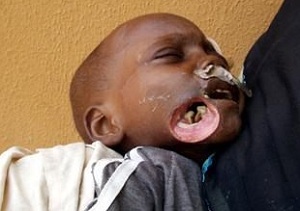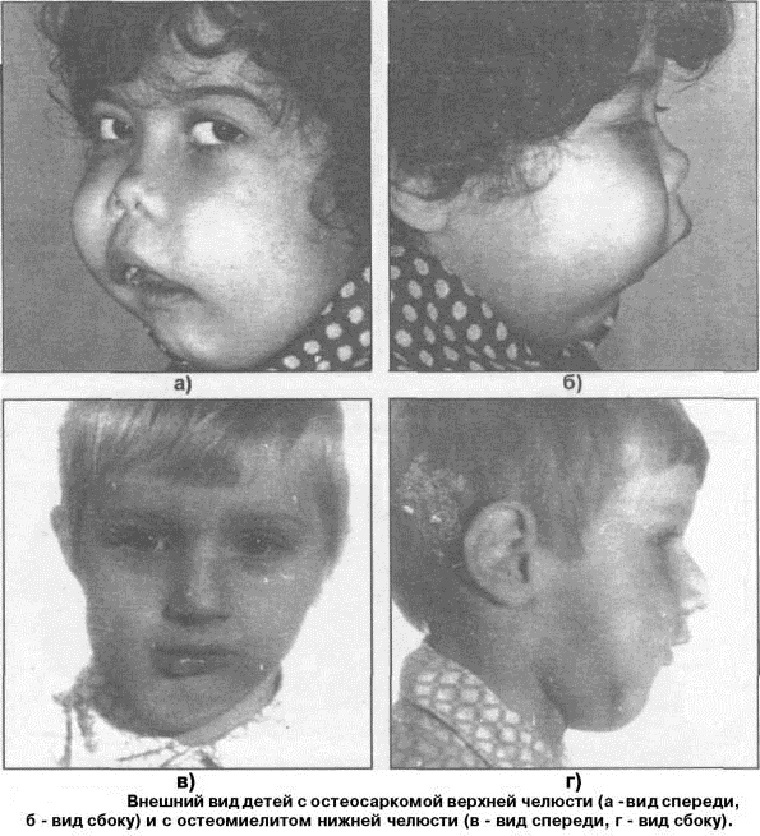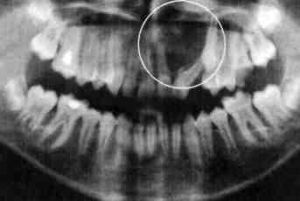 According to statistics, the share of oncological diseases of the oral cavity accounts for about 15% of the number of malignant lesions of the head and neck, among them 1-2% occupy the cancer of the jaw.
According to statistics, the share of oncological diseases of the oral cavity accounts for about 15% of the number of malignant lesions of the head and neck, among them 1-2% occupy the cancer of the jaw.
Most often, this disease occurs in men after 50( as one of the reasons for the development of this pathology are bad habits), but can also occur in patients of different age categories.
Contents
- General description
- Reasons for the occurrence of
- Symptomatic features depending on the
- clinic Characteristics of the symptomatology depending on the location
- Diagnosis in the
- What can medicine offer?
- How to prevent trouble?
General description
Cancer of the jaw is a pathology characterized by the emergence and proliferation of malignant lesions on one of the two opposing bone structures located near the oral opening.
The disease can cause serious functional disorders and cause aesthetic defects. It happens to be primary( immediately diagnosed in bone tissue: Ewing's sarcoma, osteosarcoma and giant cell tumor) and secondary

. In the photo, the species of the most malignant of the jaw cancers is the osteosarcoma
( occurs as a result of metastasis from another organ to bone tissue).
Tumors of the jaws are also divided into odontogenic( associated with the teeth-forming tissues) and non-dentogenic( those that are associated with the bone).
Odontogenic malignancies include epithelial cancer and sarcoma. To osteogenic( neodontogenic) neoplasms are:
- osteomas;
- osteoblastoma;
- chondromas( cartilage-forming tumors);
- fibromas( formed from connective tissue);
- hemangiomas( vascular), etc.
Causes of occurrence of
The reasons for this pathology are still not fully understood. There are a number of factors that are capable of provoking the appearance of malignant tumors( primary cancer) in the jaw region:
- of any kind of injury and injury to the oral mucosa;
- dental diseases;
- adverse effects of various materials used to treat teeth;
- bad habits;
- neoplasms that have arisen on other organs and released metastases;
- precancerous diseases, such as: leukoplakia, leukokeratosis and papillomas in the oral cavity.
Symptomatic features depending on the
clinic There is a classification of maxillary cancer according to which the disease occurs in 4 stages:
- I stage - the tumor is formed in one anatomical zone, there are no changes in bone tissue.
- II stage ( as III and IV) is divided into a and b levels. Level 2a is characterized by the spread of cancer, an increase in size and destructive changes in bone tissue. At 2b, the tumor spreads to adjacent areas and there is no soldered( one) metastasis.
- III stage .3a level is characterized by the spread of cancer into the orbit and the nasal cavity. The cancer of the upper palate and( or) on the alveolar process is revealed, and also the osteolysis of bone tissue is observed. At 3b, metastases( unilateral or bilateral) are detected.
- IV stage .4a level - malignant formation extends to the nasopharynx and the skull( its base), the skin manifests itself in the form of ulcers. There are no distant metastases. At 4b - the affected area( neighboring areas are affected) and metastases( soldered to tissues) are detected.

Definitions of malignant formations of the mandible by stages have not yet been accepted. According to Professor AI Paches, the disease by stages can be classified as follows:
- T1, lesion area - one anatomical part;
- T2, the affected area - no more than 2 parts;
- T3 - damage more than 2 parts;
- T4 - the defeat of a large area of the lower jaw and spread to other organs.
Symptoms depending on the location of
The manifestations of malignant neoplasms of the upper and lower jaws are somewhat different, so it is very important to know what symptoms are characteristic for each of them.
Symptoms of lesions in cases where the tumor was formed in the maxilla( anterior section):
- migraine;
- increased alveolar process;
- purulent exudate from the nasal sinus;
- paresthesia of certain areas of skin;
- puffiness of cheeks in certain zones;
- numbness and soreness of healthy teeth, their precariousness;
- changing the shape of the face.
Symptoms of lesions in cases where the tumor was formed in the maxilla( posterior section): 
- tear;
- painful sensations of a neurological nature and temporal pain.
Symptoms of a malignant tumor in the lower jaw also have some differences, depending on whether the neoplasm is primary or secondary.
Primary swelling of the lower jaw is accompanied by such symptoms:
- pain in intact teeth, unsteadiness, resulting in their gradual loss;
- partial numbness( paresthesia) of the lower lip.
Secondary tumor has such symptoms:
- occurrence of an ulcer and bleeding from it in the alveolar part;
- acute pain during palpation;
- unpleasant odor;
- development of cachexia.
Diagnosis in a health facility
Malignant formation of the jaw region in most cases is detected already in the late stages, when the disease is very difficult to treat.
From diagnostic methods, in addition to visual examination, a specialist must necessarily collect anamnesis and study soft tissue by palpation.

Tumor on the x-ray is surrounded by a circle
An X-ray examination and CT scan are also used to establish an accurate diagnosis, determine the location and stage of the cancer.
X-ray diagnostics is one of the most commonly used methods that help detect neoplasms. With the help of this method, research is carried out in the nasolabial and nasolobar projections, as well as the alveolar process.
This method is also good for determining the nature of the tumor. Benign neoplasms in the picture have a more correct form, malignant - have fuzzy boundaries and "eaten out" contours.
Thanks to the CT, it is possible to detect a small tumor and determine its exact location.
In addition to the above methods, radionuclide and morphological diagnostics, thermal imaging method can also be used.
What can medicine offer?

A modern approach-an artificial jaw, printed on a 3D printer
The dentist and oncologist are engaged in the treatment of jaw cancer. These specialists determine which method of control is more suitable in a particular situation.
For the treatment of resection of different types( partial, segmental, half of the jaw and tissues), palliative radiation, radiation and gamma-therapy are used.
During rehabilitation, the patient needs orthopedic treatment, which is carried out with the help of bone plastic, special tires and functional rehabilitation( restoration of speech function and functions of the chewing apparatus).
Caution! The video contains shocking shots:
How to prevent trouble?
Despite the fact that it is almost impossible to control oncogenic processes in the body, there are still basic tips and rules that must be adhered to in order to prevent the development of this insidious and dangerous disease.
First of all, you need to take good care of your teeth and oral mucosa. Correct and systematic care, routine visits to the dentist and timely access to specialized specialists( not only to the dentist, but also the otolaryngologist, ophthalmologist, etc.) can reduce the risk of this disease several times.
Do not forget that the main preventive measure against all existing diseases is a healthy lifestyle. Abandonment of bad habits, proper nutrition, daily moderate physical activity, absence of stressful situations and depressive states are the way to longevity.
